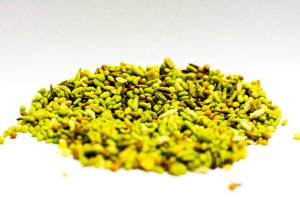Exploring the World of Cheese Varieties
Cheese has been a staple food for centuries, loved by people all around the world. Its rich flavors, creamy textures, and versatile uses make it a beloved addition to any meal. From the classic cheddar to the exotic feta, the world of cheese is vast and filled with tantalizing options. Join me as we explore the world of cheese varieties, uncovering their unique characteristics and culinary uses.
The Basics of Cheese Varieties
Before we dive into the fascinating world of cheese, let’s start with the basics. Cheese is made from curdled milk, using different kinds of bacteria, enzymes, and fungi. The type of milk, as well as the process of making the cheese, determine its flavor and texture. Typically, there are four main categories of cheese: soft, semi-soft, firm, and hard. Within these categories, there are countless varieties, each with its distinct taste and characteristics.
Fresh Cheeses
Fresh cheeses are unaged and usually have a high moisture content, resulting in a soft and creamy texture. Examples of fresh cheeses include ricotta, cottage cheese, and feta. These cheeses are perfect for spreading on bread or crackers, as well as for use in salads and dips.
Semi-Soft Cheeses
Semi-soft cheeses have a moisture content between 50-60%, giving them a slightly firmer texture than fresh cheeses. This category includes popular varieties like Brie, Camembert, and Havarti. These cheeses are ideal for melting, making them a flavorful addition to sandwiches, omelets, and quiches.
Firm Cheeses
Firm cheeses have a moisture content between 39-50%, resulting in a harder texture. Examples include cheddar, Gouda, and Swiss. These cheeses are perfect for slicing, grating, and shredding, making them versatile for use in recipes like macaroni and cheese or cheesy casseroles.
Hard Cheeses
Hard cheeses are aged for a longer period, resulting in a low moisture content and a hard, dense texture. Parmesan, Romano, and aged Gouda are popular examples of hard cheeses. These cheeses are typically used in cooking, where they add a rich and nutty flavor to dishes like pasta, risotto, and soups.
Exploring the World of Cheese Varieties
Now that we have covered the main categories of cheese, let’s delve into the exciting world of cheese varieties, starting with the classic cheddar. Originating from England, cheddar is a firm cheese with a sharp and tangy flavor. It is often aged for up to two years, resulting in a crumbly and rich texture. Cheddar is perfect for sandwiches, cheese boards, and mac and cheese.
Another beloved cheese variety is feta, hailing from Greece. Made from sheep or goat’s milk, feta has a tangy and salty taste, with a crumbly texture. It pairs well with salads, pastas, and roasted vegetables, and can also be used in baking for a unique twist on traditional dishes.
Gouda is another popular cheese variety, originating from the Netherlands. It is a semi-soft cheese with a creamy and buttery taste, often described as a cross between cheddar and Havarti. Gouda can be aged for different lengths of time, resulting in flavor variations from mild to sharp. It is perfect for use in sandwiches, cheese boards, and grilled cheese sandwiches.
Next, we have Brie, a soft and creamy cheese from France. Brie has a mild and buttery flavor, with a bloomy rind that adds a distinct earthy taste. This variety is ideal for spreading on bread or crackers, and it also pairs well with fruits and honey for a sweet and savory combination.
No exploration of cheese varieties would be complete without mentioning the infamous blue cheese. This type of cheese is known for its distinct blue veins, which are a result of the addition of a type of mold. Despite its pungent aroma and sharp flavor, blue cheese is a favorite among cheese connoisseurs. It is perfect for use in salads, spreads, and dressings.
In Conclusion
Cheese varieties are as diverse as the countries they originate from, with their unique flavors, textures, and uses. From soft and creamy to aged and sharp, there is a cheese variety for every palate. So next time you’re creating a cheese platter, cooking a gourmet meal, or simply craving a quick snack, remember to explore the world of cheese varieties and discover new and exciting flavors.
As with all foods, it is important to buy high-quality cheese and consume it in moderation. With that being said, let us embrace the deliciousness of cheese and savor all the mouth-watering varieties it has to offer. Happy exploring!











